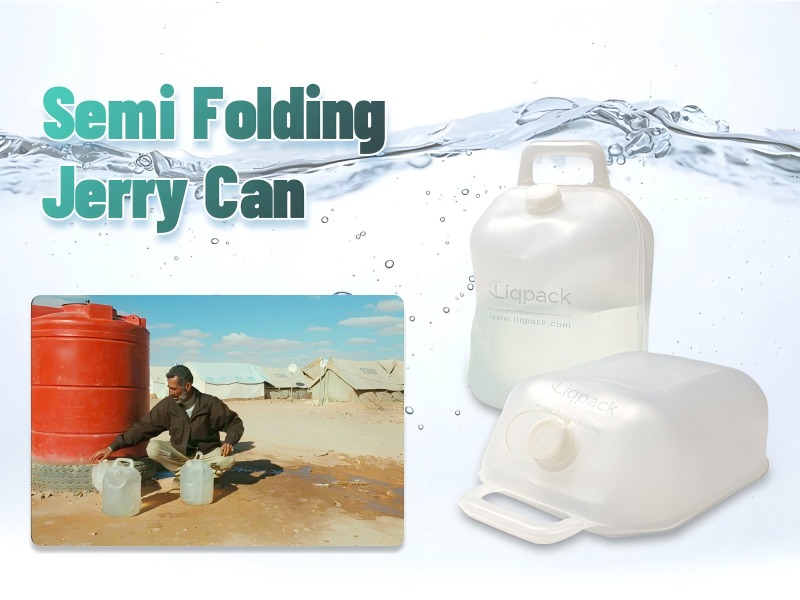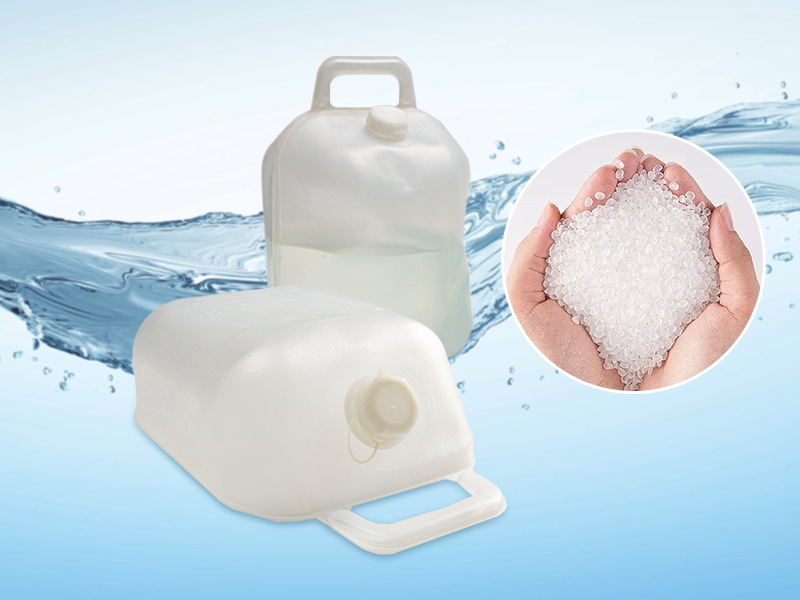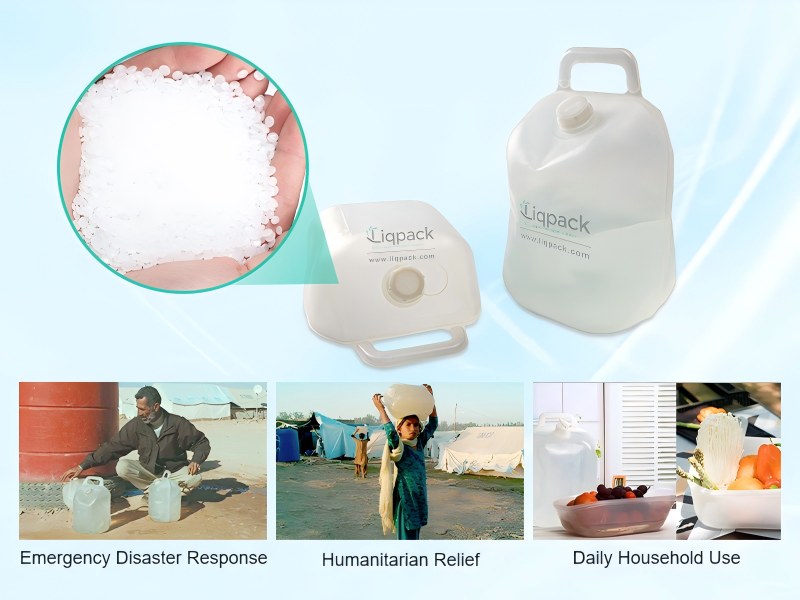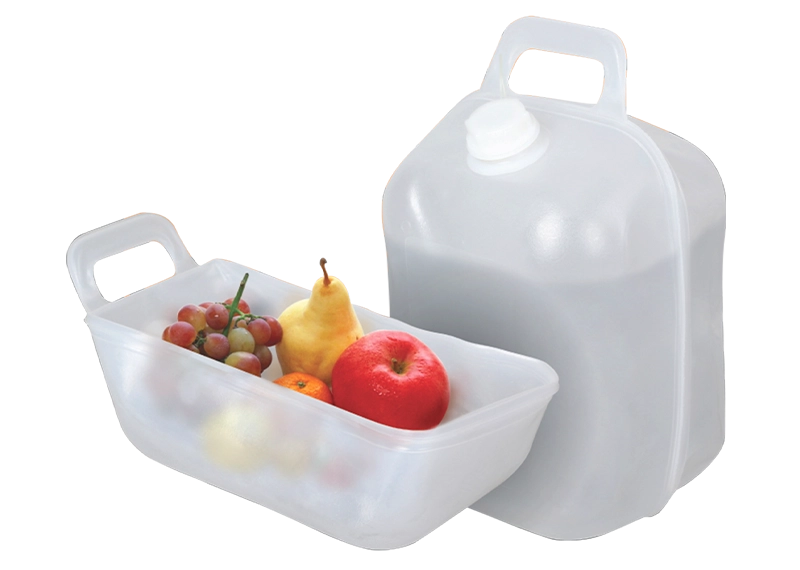
With billions of tons of plastic produced annually and only a fraction effectively recycled, industries and consumers alike are searching for packaging and storage solutions that minimize environmental harm. One innovative product making a difference is the semi-collapsible jerry can.
These containers, designed for safe liquid storage and transport, are not only practical but also incorporate eco-friendly features that reduce waste and encourage more sustainable practices. In this article, we’ll explore how semi-collapsible jerry cans help reduce plastic consumption, their environmental advantages, and why they are becoming the preferred choice for businesses and consumers committed to sustainability.
Understanding Semi-Collapsible Jerry Cans
A semi-collapsible jerry can is a container made primarily from LDPE (low-density polyethylene) or other food-grade plastics. Unlike rigid jerry cans, which hold their shape permanently, semi-collapsible versions have flexible walls that compress slightly as liquid is dispensed. They maintain stability while reducing headspace and sloshing, and when empty, they fold or collapse to save space during storage or return transport.
These cans are commonly used for:
- Potable water storage in camping, emergency preparedness, and humanitarian aid.
- Food ingredients such as oils, syrups, and sauces.
- Household and industrial cleaning chemicals.
- Agricultural inputs like fertilizers or pesticides (when approved for use).
What makes them eco-friendly is not only their design efficiency but also the way they address problems associated with plastic waste.

The Plastic Waste Problem
Before diving into the eco-friendly features, it’s important to frame the challenge. Traditional rigid containers contribute heavily to waste because:
- High material use: They require more plastic per unit.
- Bulky waste stream: Rigid containers take up large volumes in landfills or recycling bins.
- Single-use design: Many are discarded after just one use, especially in low-cost markets.
- Transportation inefficiency: Shipping empty rigid cans consumes unnecessary fuel and emissions due to their bulk.
Semi-collapsible jerry cans are designed to combat these issues with smarter, resource-efficient features.
Eco-Friendly Features of Semi-Collapsible Jerry Cans
Reduced Plastic Usage per Unit
Semi-collapsible designs typically use less plastic material than rigid jerry cans of the same capacity. LDPE walls can be thinner while still retaining strength thanks to ribbing and structural reinforcements. This reduction in raw material directly cuts down on virgin plastic demand and lowers the carbon footprint of production.
Collapsible Design Minimizes Waste Volume
When empty, these cans collapse or fold, taking up much less space in waste streams. This benefits recycling centers and landfills alike by reducing volume. Consumers and businesses also benefit from easier storage and transport of empty containers, which encourages proper disposal rather than abandonment.
Lightweight for Lower Carbon Emissions
A semi-collapsible jerry can weighs significantly less than its rigid equivalent. Because of this decrease in shipping weight, less fuel is used and fewer greenhouse gas emissions are released during transit. In global supply chains, these small savings add up to major environmental benefits.
Reusable and Refillable
Unlike single-use packaging, semi-collapsible jerry cans are designed for multiple reuses. Because of their endurance, they can be filled repeatedly, which lowers the need for new containers. A well-maintained can may serve for years, significantly lowering total plastic consumption.
Compatibility with Recycling Systems
Most semi-collapsible jerry cans are made of LDPE, which is widely recyclable. Their simplified design, often with fewer mixed materials than rigid cans, makes them easier to process in recycling facilities. This helps keep plastics in a circular economy rather than being discarded as waste.
Reduced Need for Secondary Packaging
Because of their collapsible design and ability to integrate with outer cartons when necessary, semi-collapsible cans often eliminate the need for excessive secondary packaging. Less cardboard, shrink wrap, and strapping are required compared to transporting multiple rigid bottles or cans.
Longevity in Harsh Environments
Their flexible nature makes semi-collapsible cans less prone to cracking or breaking under stress, temperature fluctuations, or impacts. This means fewer containers are discarded due to damage, extending their lifecycle and reducing replacement frequency.
Comparing Semi-Collapsible vs. Rigid Jerry Cans
| Feature | Semi Collapsible Jerry Can | Rigid Jerry Can | Environmental Impact |
| Plastic Material Use | Lower | Higher | Semi-collapsible reduces virgin plastic demand |
| Weight | Light | Heavy | Lightweight design lowers transport emissions |
| Waste Volume (Empty) | Collapsible, compact | Bulky | Saves landfill and recycling space |
| Reusability | High | Medium | More reuses reduce plastic turnover |
| Recyclability | Good (LDPE-based) | Mixed (HDPE, additives) | Easier to recycle in existing systems |
| Durability | Flexible, less brittle | Can crack if dropped | Longer lifespan reduces waste |

Applications Where Eco-Friendliness Matters Most
Humanitarian Aid and Disaster Relief
In emergency situations, semi-collapsible jerry cans are often used to distribute water. Their collapsible nature makes them easy to ship in bulk (saving cargo space), while their reusability ensures families don’t constantly discard containers. Aid agencies prefer them for reducing logistical waste.
Outdoor Recreation and Camping
Campers and hikers value products that don’t harm the environment they enjoy. A semi-collapsible jerry can is not only reusable but also reduces the number of disposable bottles carried into fragile ecosystems.
Food and Beverage Industry
For syrups, oils, and sauces, businesses are turning to cubitainers and semi-collapsible jerry cans as alternatives to rigid bottles. Less packaging per liter equals fewer plastics entering the waste stream.
Industrial and Cleaning Chemicals
Semi-collapsible designs minimize container breakage and waste from hazardous liquids. They ensure safe transport with fewer discarded damaged units, reducing both environmental risk and waste volume.
How Semi-Collapsible Jerry Cans Reduce Plastic Waste in Practice
Supply Chain Efficiency
Shipping empty rigid cans wastes enormous cargo capacity. Collapsible versions are shipped flat or folded, allowing hundreds more units per container load. This reduces shipping frequency, saving fuel and packaging.
End-User Reuse Habits
Semi-collapsible jerry cans are more likely to be reused by end users thanks to their durability and convenience. In many regions, they are used for multiple household tasks before reaching the recycling stage.
Supporting Circular Economy Goals
Because LDPE jerry cans can be recycled, they align with global circular economy initiatives. Many companies now encourage customers to return empty cans for recycling or refilling, closing the loop on plastic use.
Challenges and Limitations
While semi-collapsible jerry cans are more eco-friendly than rigid alternatives, challenges remain:
- Limited recycling infrastructure in some regions, where LDPE isn’t widely processed.
- Risk of improper disposal if consumers are unaware of recycling options.
- Durability vs. weight trade-off: Ultra-light designs may sacrifice longevity.
- Not suitable for all liquids: Certain aggressive chemicals may still require rigid or metal containers.
Addressing these issues through awareness campaigns, design improvements, and stronger recycling systems will enhance their eco-friendly impact.
Future Trends in Eco-Friendly Jerry Cans
The push for sustainability is driving new innovations:
- Bio-based LDPE: Derived from renewable resources like sugarcane instead of fossil fuels.
- Recycled Content Integration: Using post-consumer recycled plastics to manufacture new cans.
- Modular Systems: Refillable semi-collapsible cans designed for closed-loop supply chains.
- Improved Recycling Labels: Clearer guidance to consumers on how to recycle or reuse properly.
As technology advances, semi-collapsible jerry cans will become even more environmentally friendly and aligned with zero-waste initiatives.
How Businesses Benefit from Eco-Friendly Semi-Collapsible Jerry Cans
- Brand Reputation: Companies adopting sustainable packaging attract eco-conscious customers.
- Cost Savings: Reduced material use and shipping costs.
- Regulatory Compliance: Meeting stricter global packaging and waste regulations.
- Corporate Responsibility: Tangible proof of commitment to environmental goals.
Switching to semi-collapsible jerry cans can be both a business advantage and an environmental responsibility.
Tips for Consumers and Businesses
For Consumers
- Choose reusable semi-collapsible cans instead of disposable bottles.
- Clean and maintain them for long-term use.
- Recycle properly at the end of life.
For Businesses
- Select suppliers offering recyclable, BPA-free LDPE containers.
- Encourage return/reuse programs.
- Highlight eco-friendly packaging in marketing to appeal to sustainability-focused buyers.
Conclusion
Plastic pollution is one of the defining challenges of the modern era, but smarter design and better material choices can make a difference. Semi-collapsible jerry cans are a packaging option that strikes a compromise between sustainability and usefulness. By using less plastic, collapsing to reduce waste volume, encouraging reusability, and fitting into recycling systems, they offer a clear path to reducing plastic waste in industries and households alike.
Whether for humanitarian aid, camping trips, food production, or industrial storage, these containers demonstrate how even simple innovations can make a meaningful environmental impact. Businesses and consumers alike can get closer to a cleaner, greener future by selecting semi-collapsible jerry cans.
- Liqpack


